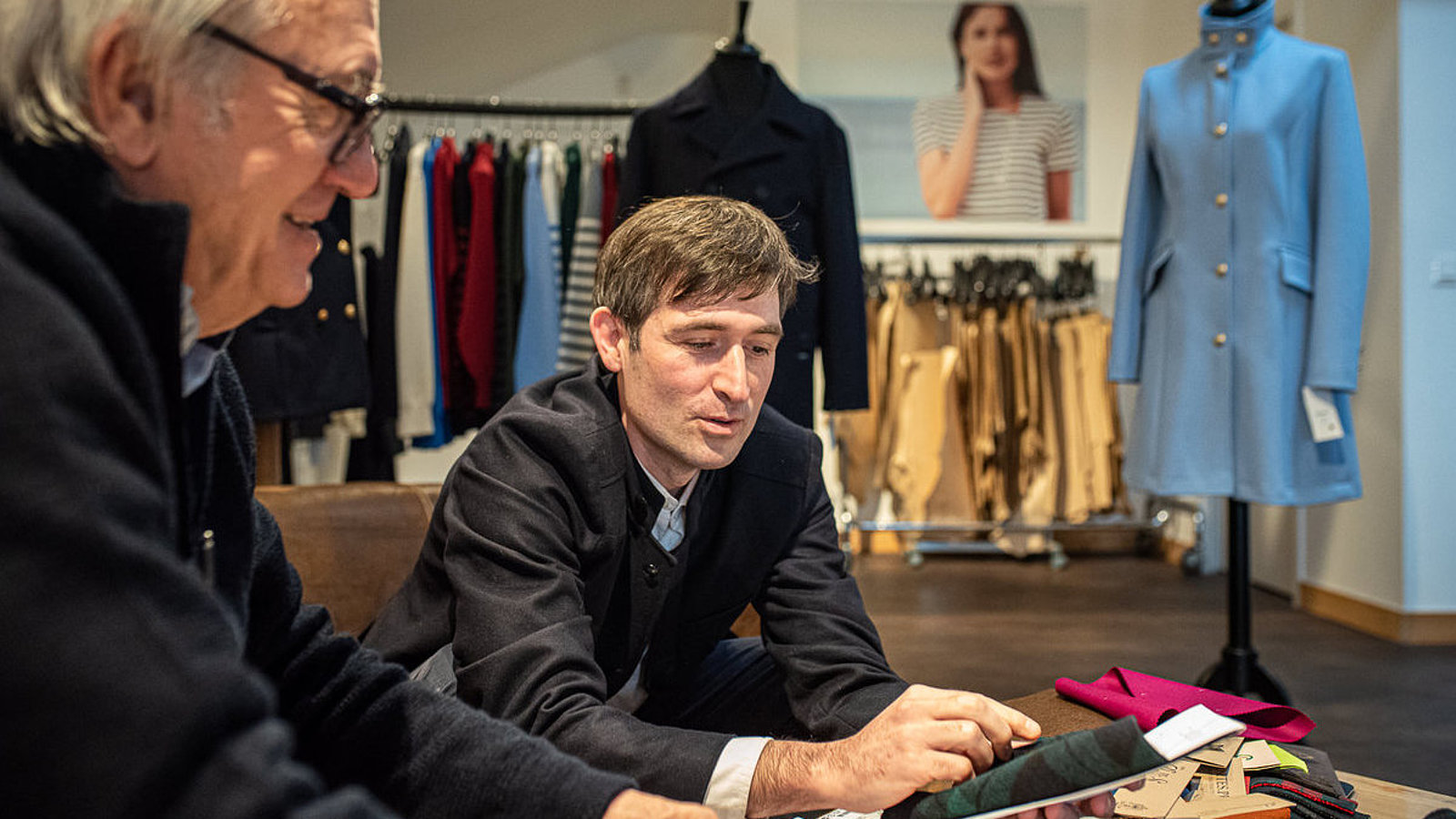What is the origin of Dalmard Marine ?
In 1922, it was the attachment to the sea, to Brittany and its values that was at the origin of Dalmard Marine.
I cannot talk about the history of the company without mentioning Paimpol, one of the main ports of “Great Fishing” from the beginning of the 19th century, immortalized by Pierre Loti in his novel “Fisherman of Iceland”. Before each campaign, the basin was a forest of masts, the quays cluttered with families who came to accompany the men and children called to embark for several months on the schooners, a dangerous and exhausting journey from which some would not return. Today, it is a marina and fishing port, destination of many French and foreign tourists.
What have previous generations passed on to you ?
My family taught me a taste for adventure and open-mindedness.
My great-grandfather, a strong character, a young sailor from “Terre Neuvas”, created the textile company in 1922. He made oilskins and jackets adapted to the harsh living conditions of Icelandic fishermen from canvas tents recycled in its cutting workshop in Paimpol. Fighting, determined and resourceful, if he saw an opportunity to develop his business, he went for it!
My grandparents (he, war hero and she, resistant) perpetuated the company by creating the first models of peacoats and kabigs in French woollen cloth and by opening a shop in Paimpol and two others in Paris. Endowed with an innate sense of business, my grandmother had such easy contact that it took her three-quarters of an hour to cross her hometown as she was stopped by everyone knowing her.
My parents also showed fighting spirit. It is not enough to inherit a name; you have to prove yourself, be recognized and accepted. Their installation in Paimpol, the continuation of the shop and the confection were challenges that they took up with the team, by dint of work, energy and inventiveness. Their responsiveness and ability to adapt have enabled them to cope with the transformation of the world of commerce. Boldly, without speaking a word of English, they have built up a solid network of points of sale in Europe and North America! They have also forged strong links with suppliers and production units in France and Europe.
How did you become leader of the Dalmard house ?
Project director in a large group for 10 years, nothing predestined me to take the head of the company. However, this idea made its way in my mind before becoming a life project duly analysed and thought out with my wife.
When in 2017 my parents announced to me that they had found a buyer, they were completely surprised to learn of my wish to take over. They oscillated between pride, happiness to keep the company in the family bosom and apprehension, because it must be admitted, selling to a third party is easier on a daily basis than passing it on to your child.
It is today for me an immense honour and a great responsibility to represent the fourth generation of the family house.
Since your take over in 2017, what are you most proud of ?
My greatest pride is my crew, who every day, in every action, helps the company grow. I can count on their commitment, their sense of service, creativity, skills and their love of a well done job.
The textile business is a profession of passion, a very competitive sector, requiring constant renewal while keeping its DNA. I am proud to continue to offer quality clothing in an era where everything is always going faster, and to develop new offers, while improving the company's social, societal and environmental practices.
How do you imagine Dalmard Marine in 100 years ?
In 2122, Dalmard Marine will celebrate its 200th anniversary because it will have succeeded in adapting, reinventing itself and innovating. It will always be rooted in Brittany and I hope it will still be family-run, in any case independent, carrying our values, our Breton identity high: commitment, sense of community, responsiveness, flexibility and above all a long-term vision.
I don't know if the brand's flagship product will always be the iconic peacoat, but the desire of future leaders will be to maintain the same quality standards with the lowest possible environmental impact.
